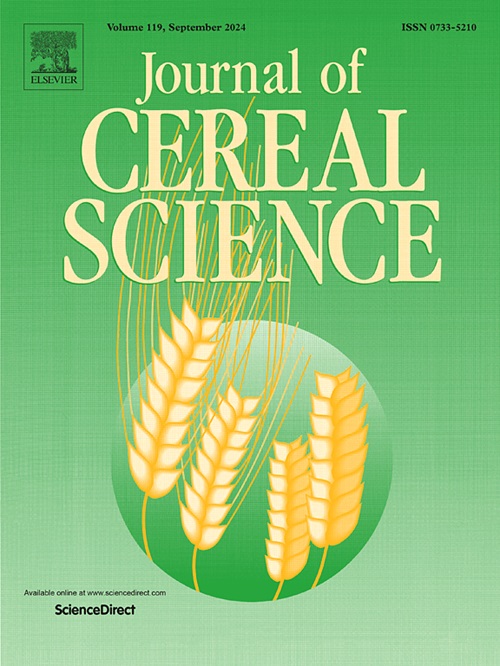Delineating the synergistic effect of radio frequency and acidic pH regulation on the shelf life and quality of semi-dried noodles
IF 3.7
2区 农林科学
Q2 FOOD SCIENCE & TECHNOLOGY
引用次数: 0
Abstract
This study aimed to investigate the effect of radio frequency (RF)-synergized pH regulation on the shelf-life and quality of semi-dried noodles. A comprehensive analysis was conducted on microbial, quality and microstructural characteristics. The addition of 0.4 % monosodium fumarate reduced the pH of semi-dried noodles from 5.88 to 4.75, and extended their shelf-life to 7 d. Moreover, RF treatment significantly (P < 0.05) reduced the initial mold and yeast to 0 lg CFU/g, and extended the shelf-life to 5 d. Furthermore, RF-synergized acidic pH significantly (P < 0.05) reduced the initial total plate count from 2.99 lg CFU/g to 2.27 lg CFU/g while significantly (P < 0.05) reducing the initial mold and yeast to 0 lg CFU/g, thus prolonging the shelf-life to 15 d. The combined treatments increased bound water contents (A21) from 0.982 to 0.987, and decreased its relaxation time (T21) from 2.656 ms to 1.520 ms. Furthermore, RF-induced protein polymerization and textural improvement compensated for the acidic pH-induced quality deterioration of semi-dried noodles. This resulted in an increased protein network junction and enhanced textural stability of semi-dried noodles following combined treatments. Therefore, the synergistic treatment of RF and acidic pH regulation is a potential preservation technology in semi-dried noodles.

描述了射频和酸性pH调节对半干面条保质期和品质的协同效应
本研究旨在探讨射频(RF)协同pH调节对半干面保质期和品质的影响。对其微生物、品质和微观结构特征进行了综合分析。添加0.4%富马酸钠可使半干面条的pH值从5.88降至4.75,并使面条的保质期延长至7 d。0.05)将初始霉菌和酵母降低至0 lg CFU/g,并将货架期延长至5 d。此外,rf协同的酸性pH显著(P <;0.05)将初始总菌落计数从2.99 lg CFU/g降低到2.27 lg CFU/g,同时显著(P <;0.05)将初始霉菌和酵母降低到0 lg CFU/g,从而延长保质期至15 d。联合处理将结合水含量(A21)从0.982提高到0.987,将其松弛时间(T21)从2.656 ms降低到1.520 ms。此外,rf诱导的蛋白质聚合和质构改善弥补了酸性ph诱导的半干面品质劣化。结果表明,复合处理后的半干面蛋白网络结增加,质地稳定性增强。因此,RF与酸性pH调节协同处理是一种很有潜力的半干面保鲜技术。
本文章由计算机程序翻译,如有差异,请以英文原文为准。
求助全文
约1分钟内获得全文
求助全文
来源期刊

Journal of Cereal Science
工程技术-食品科技
CiteScore
7.80
自引率
2.60%
发文量
163
审稿时长
38 days
期刊介绍:
The Journal of Cereal Science was established in 1983 to provide an International forum for the publication of original research papers of high standing covering all aspects of cereal science related to the functional and nutritional quality of cereal grains (true cereals - members of the Poaceae family and starchy pseudocereals - members of the Amaranthaceae, Chenopodiaceae and Polygonaceae families) and their products, in relation to the cereals used. The journal also publishes concise and critical review articles appraising the status and future directions of specific areas of cereal science and short communications that present news of important advances in research. The journal aims at topicality and at providing comprehensive coverage of progress in the field.
 求助内容:
求助内容: 应助结果提醒方式:
应助结果提醒方式:


